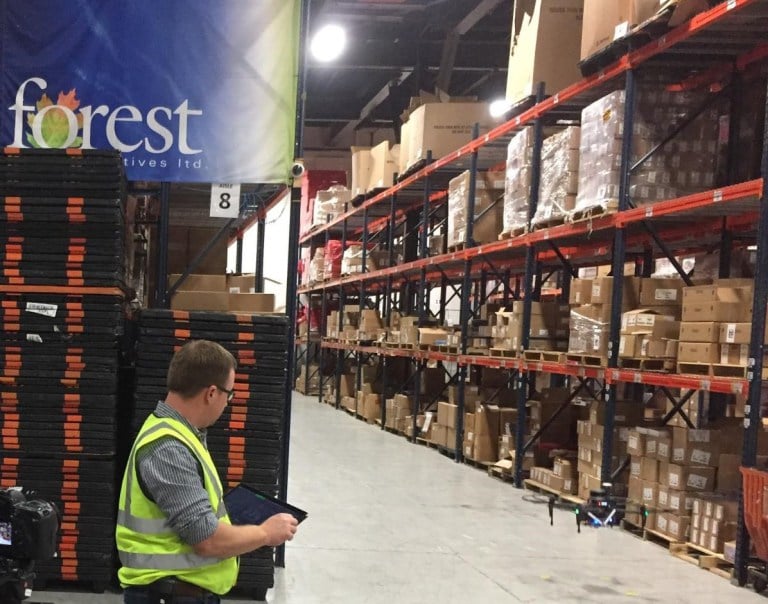The warehousing and logistics arena has seen several innovations over the years improving the density of inventory held in a warehouse and the speed at which inventory can move in, around, and out of the warehouse.
However, one of the more substantive drivers of operational efficiency and effectiveness is the accuracy and timeliness of inventory data, which informs key business decisions. While inventory management and enterprise resource planning (ERP) systems have become significantly more sophisticated, their effectiveness is entirely dependent on the quality of data that is fed into it – as the old adage goes: garbage in, garbage out.
The process to acquire inventory data in warehouses and back-rooms is being done the same way today as it was decades ago – physical inventory checks and cycle counts. This typically requires an army of people going through the warehouse counting inventory which is slow and therefore disruptive to the operations, expensive, and in cases there may be dangers for the people doing the counting.
Moreover, people are people – the counts are prone to errors. In addition to the expense of the exercise, the consequence of the inventory inaccuracies is persistent inventory on the balance sheet, customer dissatisfaction due to fulfillment delays, and untamed internal loss/shrinkage. Automating the process would allow for reliable, frequent and safe acquisition of data, which, in turn, yields significant benefits in improving accuracy, saving time and lowering costs.
We demonstrate our robot, running the exynAI software, flying autonomously through the warehouse, scanning for barcodes along the way and creating a map of the locations of the barcodes. We partnered with a local warehouse in Pennsylvania for this demonstration. This warehouse has tall shelves which cannot be reached without a ladder or lift, making aerial robots a great option for inspecting inventory at those heights.
A warehouse a challenging environment for a robot to navigate in because there are many repeated aisles making it challenging to localize the robot, the aisles can be very narrow, moreover, there are constantly people and vehicles moving around in the environment making it very dynamic. In this warehouse, narrow underpasses connect aisles allowing a shortcut to navigate between aisles without having to go all the way down to the front of the aisle.

The robot does not have any prior information about the environment or a map for navigation. Instead, it is provided a set a sparsely placed waypoints or goal positions relative to its start location and is commanded to visit as many of these waypoints as possible while scanning for barcodes and avoiding obstacles along its way. When the robot is turned on, it immediately begins to build a map of its environment. Using the array of sensors mounted on the robot, it creates a 3D map of its surroundings and dynamically plans trajectories in order for it to reach the goal location.
The warehouse is a highly dynamic workplace, with people, ladders, and forklifts constantly in motion. Therefore it’s absolutely crucial for our robot to handle a changing environment. In our demonstration, while traveling along the top shelf, the robot detects the emergency exit sign. Realising that the sign is in its original planned path, the robot updates its plan and creates a new path before swiftly ducking down to avoid the sign as it continues toward its goal. As it comes around the corner to the next aisle, the robot encounters a ladder in the middle of the aisle – a typical scenario in a warehouse. The map is updated and the robot plans a path that goes safely around the ladder and the person. Furthermore, when the lights go out, our robot can still continue its mission.
All the computation happens onboard, including the mapping of the environment, estimating the location of the robot within the map, planning and updating trajectories, determining the control actions needed to follow the desired trajectory and locating and decoding the detected barcodes to name a few. Furthermore, this computation is running in real-time which enables the robot to react to changes in the environment.
Our robot is easy to operate with the autonomous flight started simply by pressing the start button on the touch interface of the Exyn Portable Flight Monitor. The Flight Monitor provides real time information streamed wirelessly from the robot, showing how the robot is perceiving its environment. At the end of the inventory mapping mission, the robot uploads the inventory information such as the items detected and their bin locations to a warehouse management system.
